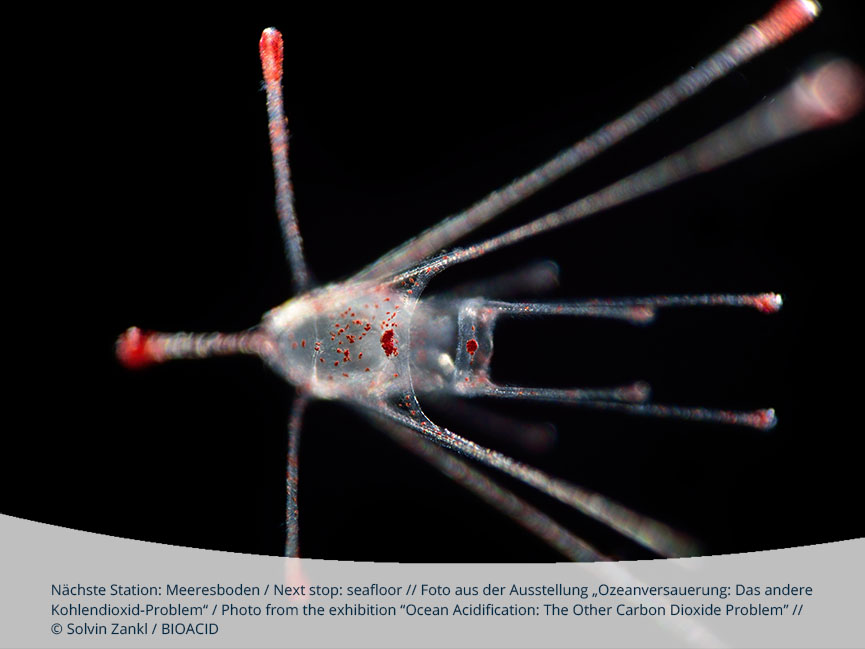Watching sea urchin larvae through a microscope feels like an encounter of the third kind: Like tiny starships, they make their way through the water. The tiny space shuttles are called pluteus larvae. They are not even half a millimetre long but very agile and form a feast for fish, shrimps and crustaceans.
At this stage of their development, the animals build spicules, a kind of calcium carbonate skeleton. Because this requires more energy in more acidified water, their growth is slowed down. It takes more time until the actual sea urchin develops inside the pluteus, digests the housing and starts is life at the seafloor – free and well-fed.
Photo: Solvin Zankl
